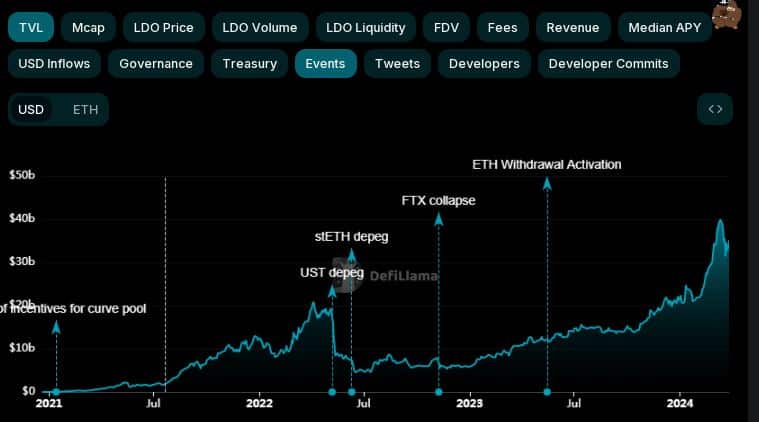- Lido’s market share had reached near the critical threshold last year.
- LDO’s bullish trajectory carried on from last week.
Prominent Ethereum [ETH] advocate Evan Van Ness’ cheeky post on social platform X (formerly Twitter) about Lido Finance [LDO], the largest liquid staking protocol, grabbed some eyeballs on the 25th of March.
The story behind
Van Ness brought attention to the drop in Lido’s ETH staking market share, from 32.37% in September 2o23 to 30.36% at the time the post was made, using the famous “How it started vs How it’s going” meme.
AMBCrypto cross-examined the claims using data from Dune Analytics and found them to be true. But why does it matter?
Evan Van Ness in September 2023 had raised concerns over Lido’s increasing dominance in the ETH staking sector.
Its market share at that time was nearing 33% — a critical threshold at which a single entity could theoretically manipulate Ethereum network’s operations.
Without mincing words, he had labeled Lido as the:
“Biggest attack on Ethereum’s decentralization.”
It was no surprise that a drop in Lido’s market share filled him with impish glee, causing him to frame the aforementioned post in a manner he did.
The allegations of centralization
Evan Van Ness was not the first to raise this red flag. Ethereum Foundation researcher Danny Ryan had warned of centralization risks of Lido way back in 2022
Lido Finance, as we know, is the largest staking service provider on Ethereum, with deposits of nearly 9.57 million ETH as of this writing.
By staking ETH through Lido, users not only earn yields from the network side, but also receive liquid derivatives of the locked ETH, enabling their use in other decentralized finance (DeFi) activities.
Its deposits got a boost after the activation of Shapella Upgrade last year, which allowed ETH withdrawals. This helped expand its market share.


Source: DeFiLlama
However, with the entry of liquid restaking platforms like Ether.fi, this dominance has been challenged to a degree.
Realistic or not, here’s LDO’s market cap in BTC’s terms
Meanwhile, the native token of the platform continued its upward slide, increasing 1.42% in the last 24 hours, according to CoinMarketCap.
This comes on the heels of a successful last week during which it surged 37%, becoming one of the top weekly gainers in the market.


